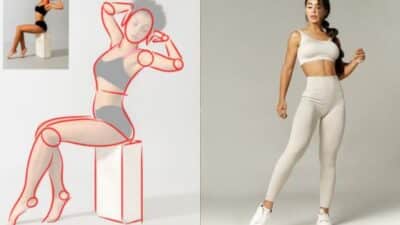Drawing an anime female body can be simple when you focus on understanding basic proportions and shapes. A good way to start is by sketching the body using simple guidelines that show the head, torso, arms, and legs while keeping the overall shape soft and curvy. This helps create the distinct look that anime girls often have, with smaller frames and slender shoulders.
Knowing that anime female characters usually follow slightly different proportions than male ones also helps. They tend to be a bit shorter and have more gentle curves. By practicing these basic shapes and proportions, anyone can improve their skill and create their own unique anime female characters.
Understanding Female Anime Body Proportions
When drawing female anime bodies, paying attention to proportions helps create balanced and believable characters. Proportions affect the size of the head, torso, limbs, and overall height. These basic measurements change depending on age and style choices in the artwork.
Common Proportion Guidelines
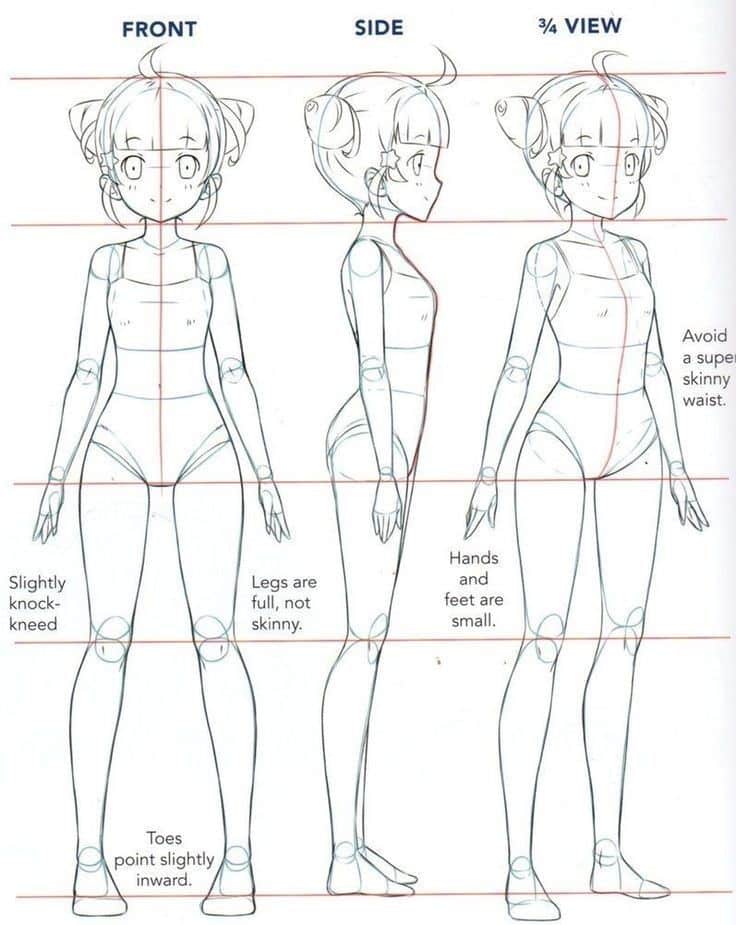
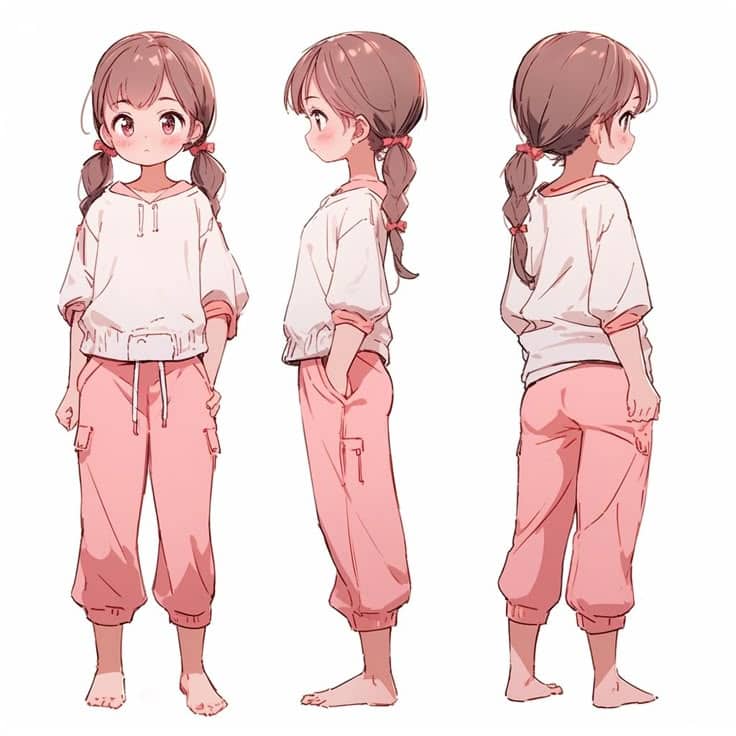
Most female anime characters are drawn around 6 to 7 heads tall. The head is used as a unit of measurement to keep the body parts in balance. The torso usually takes up about 3 heads from the neck to the hips.
Shoulders tend to be narrower than male characters, giving a softer appearance. The hips are often slightly wider than the waist. Limbs are slim but not too long unless the artist wants a taller, elegant look.
A simple way to sketch is:
- Draw a vertical center line for balance.
- Mark head heights along this line.
- Sketch shoulder and hip lines based on these marks.
This structure helps keep the figure proportional and ready for details.
Youthful vs. Mature Body Types
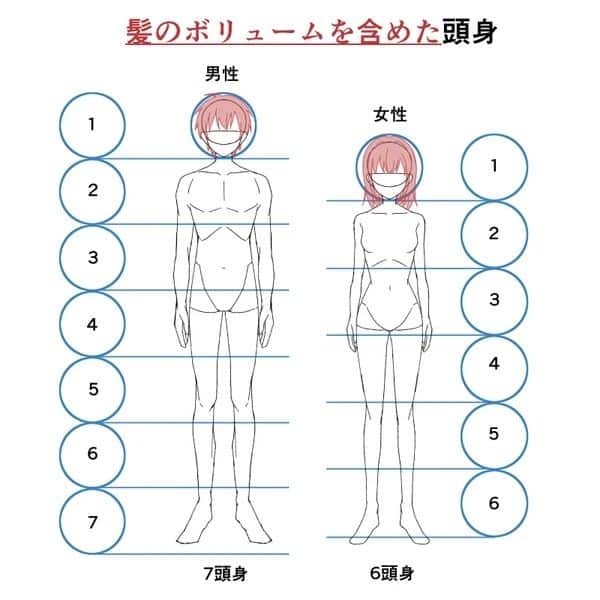
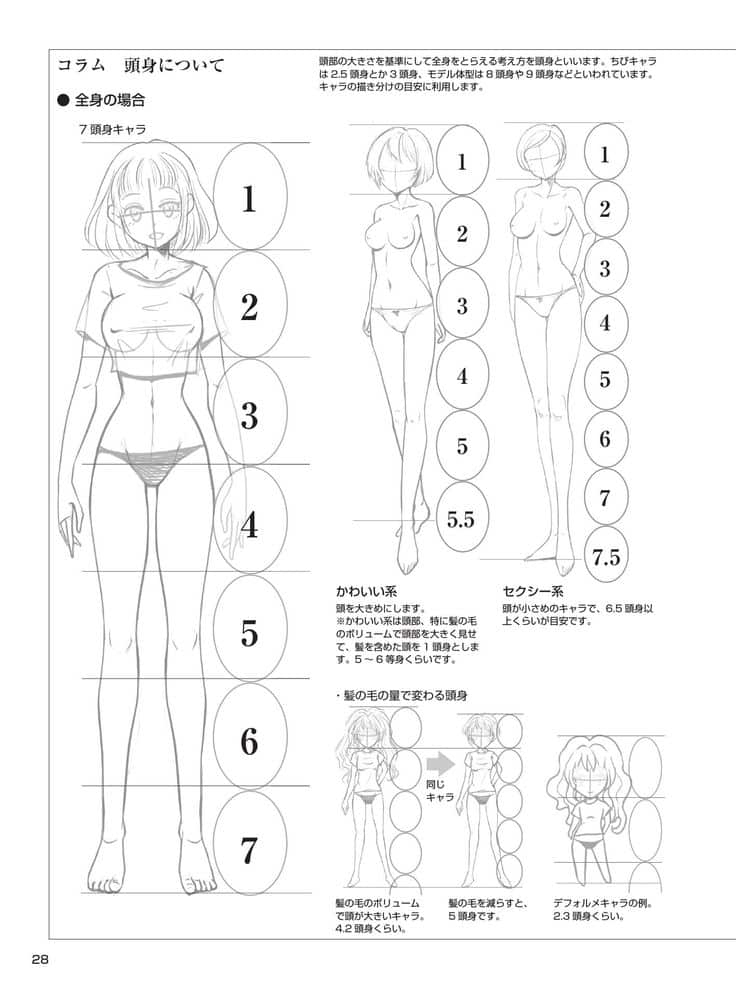
Young female anime characters usually have larger heads compared to their bodies, often about 6.5 to 7.5 heads tall. The shoulders are narrow, and the waist is small, giving a childlike or teen look.
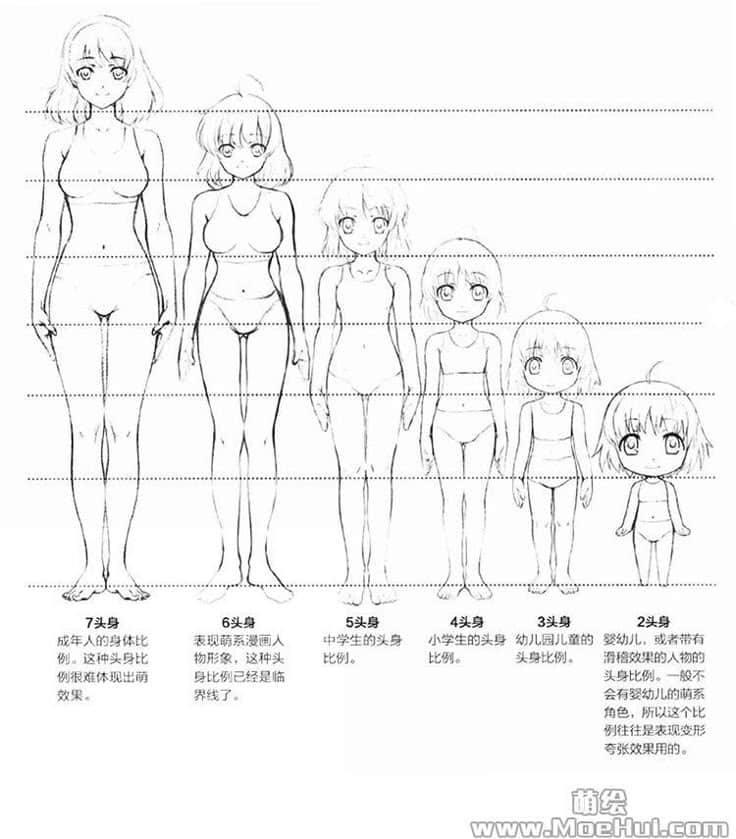
Mature female characters tend to have more defined curves and a taller height, about 7 to 7.5 heads tall. Their shoulders and hips are more balanced with a slimmer waist. The torso is longer to show growth and adult features.
Anime artists often exaggerate features like larger eyes or slimmer limbs to highlight youth or maturity. This helps express personality and age clearly.
Comparing Anime and Realistic Figures
Anime bodies simplify human anatomy to emphasize style and emotion. Realistic figures use 7 to 8 head units for height and more natural muscle and bone details.
In anime, features like the eyes, head size, and limb length are often exaggerated. For example, anime females often have bigger heads and eyes for a cute appearance.
Body shapes vary less and are cleaner in anime than in realistic drawings, which show more shadows and texture.
Learning these differences helps artists decide what style fits their character best while keeping the figure believable.
Sketching the Basic Framework
A strong base makes drawing an anime female body easier. Starting with simple lines and shapes helps keep the proportions right. This step builds the pose, body shape, and size before adding details.
Drawing Pose Lines and Gesture
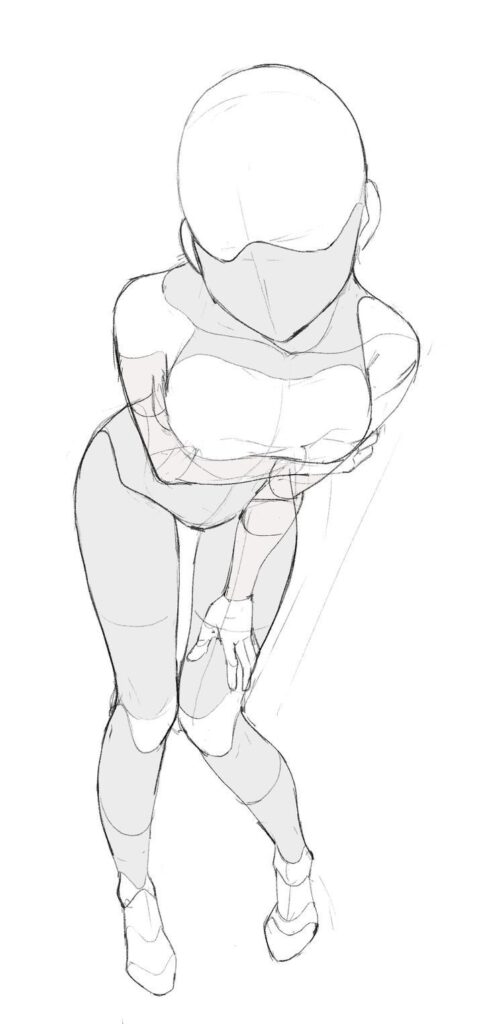
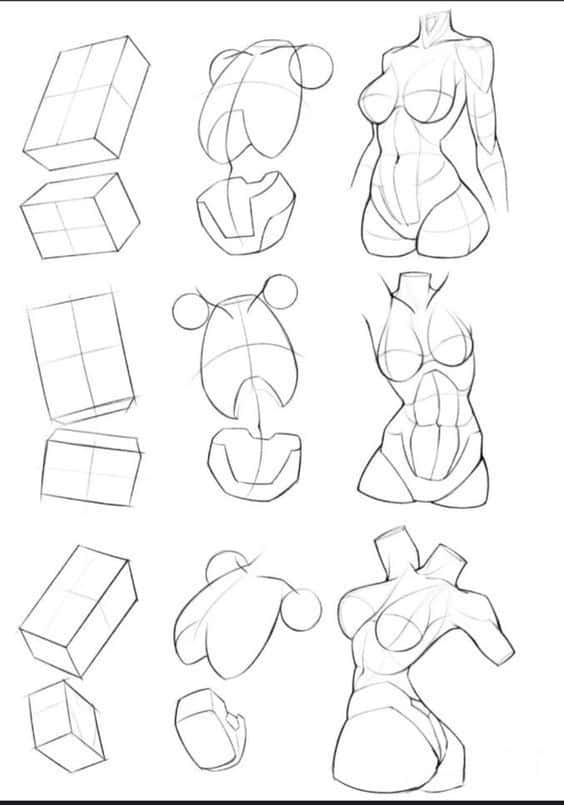
The first step is to sketch the pose using a simple line called the gesture line. This line shows the flow and direction of the body. It captures movement and emotion in a few quick strokes.
Next, draw a vertical line for the spine. Add lines for the arms and legs based on the pose. Use small circles or dots to mark joints, such as shoulders, elbows, knees, and hips. These points help place limbs correctly later.
The gesture lines shouldn’t be stiff. They should be loose and flowing to make the figure look natural and lively.
Constructing the Torso and Pelvis
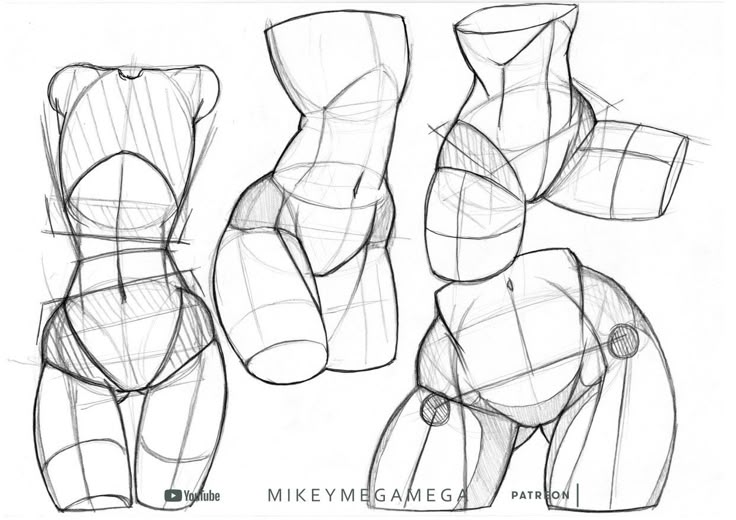
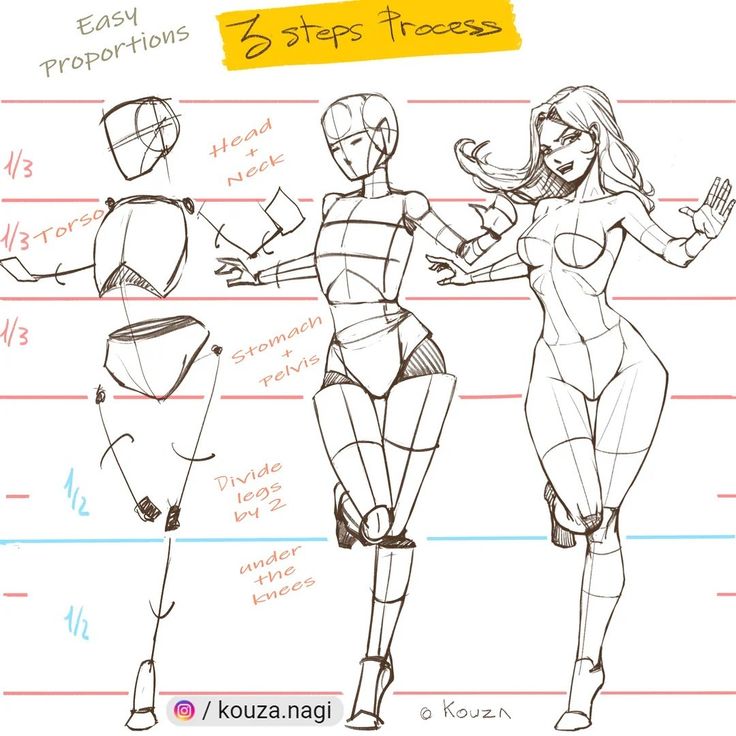
After the pose lines, the torso and pelvis are formed with simple shapes.
The torso is often drawn as an elongated oval or rectangle with rounded edges. It should be narrower at the waist and wider at the shoulders for a female figure.
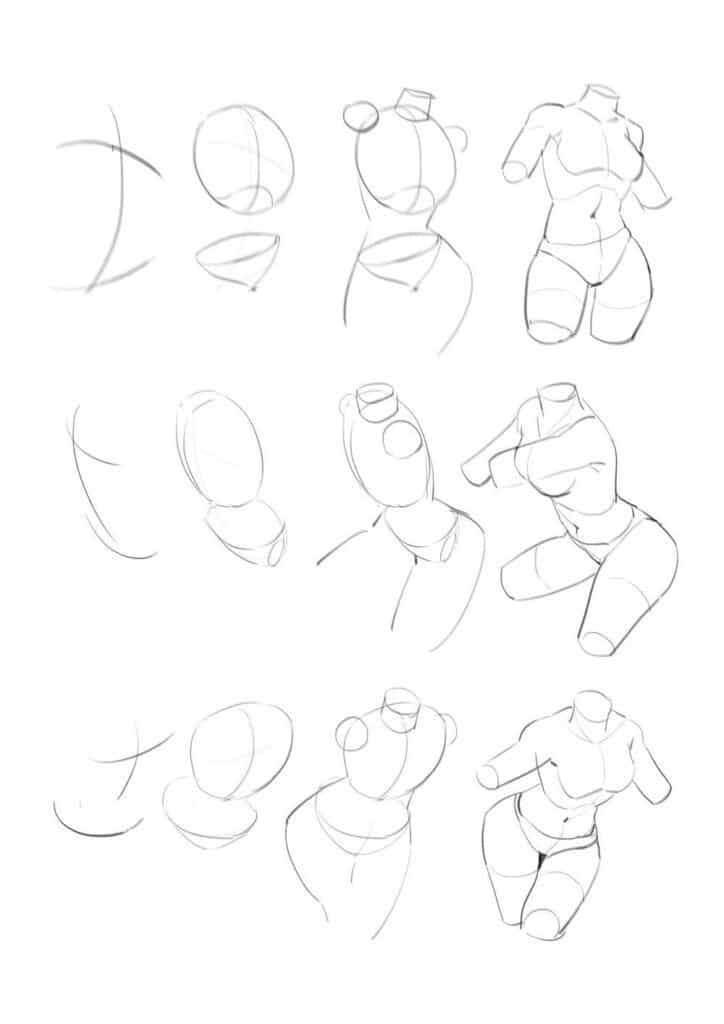
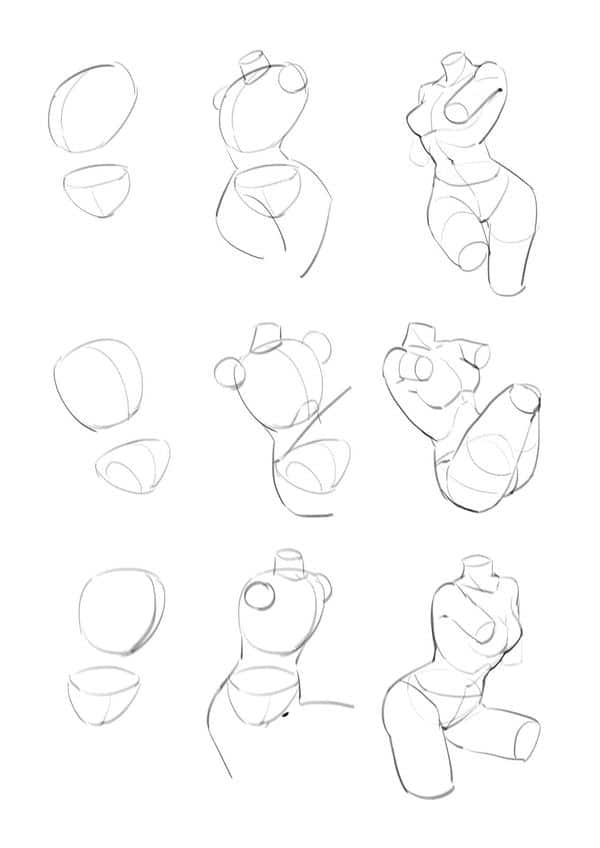
The pelvis is a wider, rounded shape below the torso. It tilts depending on the pose and connects the torso to the legs.
These shapes guide where to place the ribs, hips, and waist. Making these basic forms helps keep the body balanced and proportional.
Setting Head-to-Body Ratio
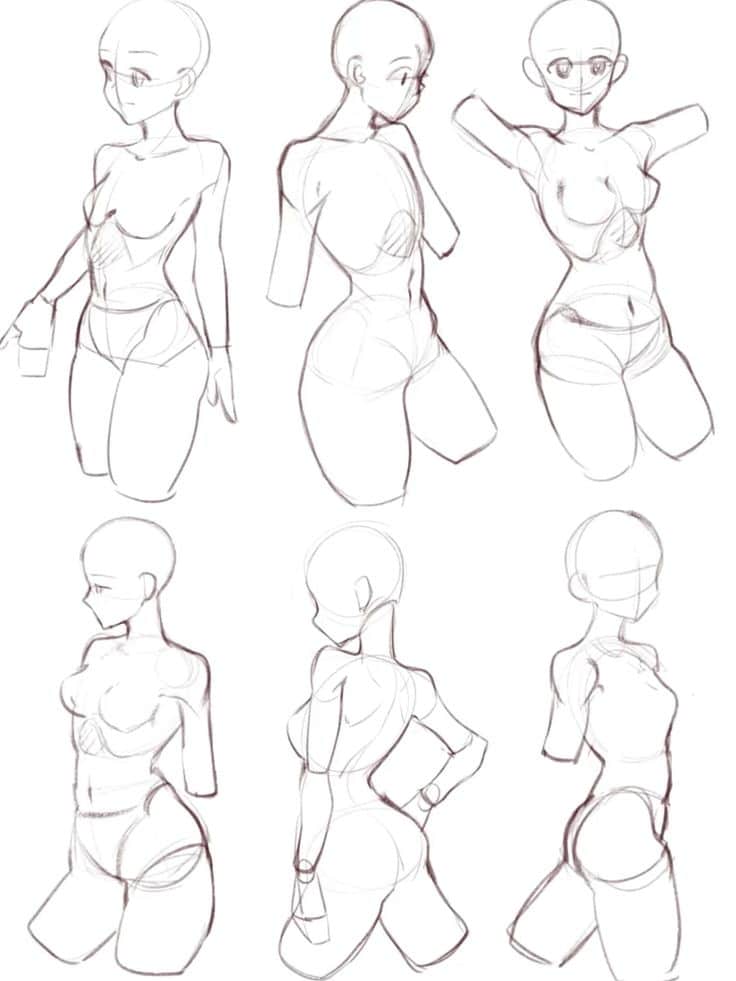
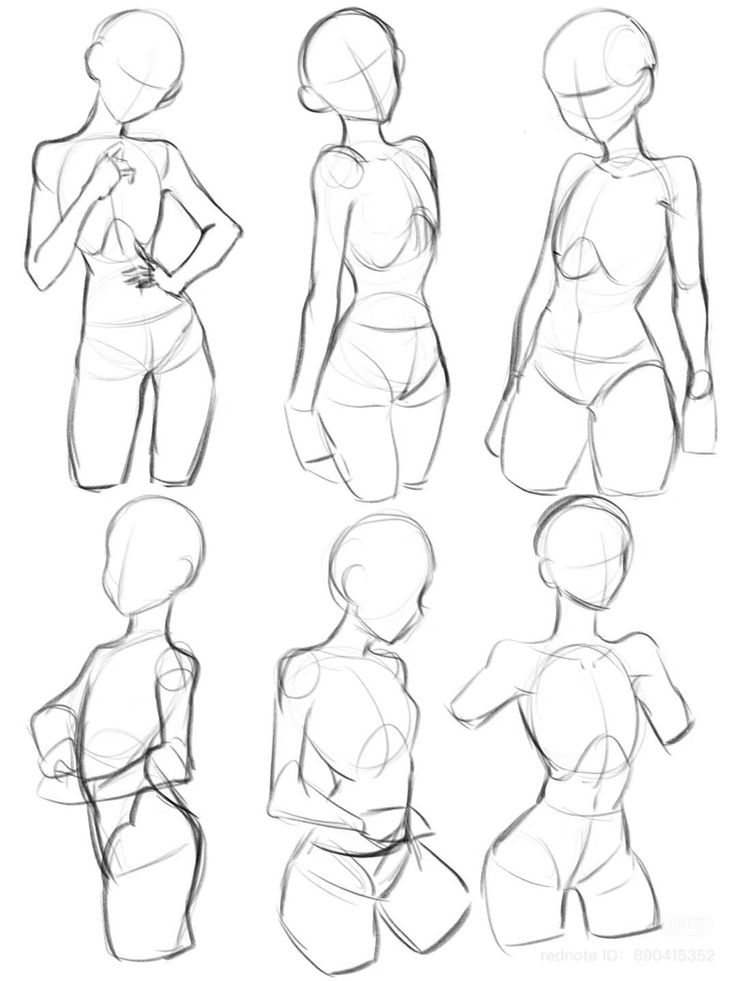
The head-to-body ratio is key for anime style proportions. Most anime females are drawn about 6 to 7 heads tall.
The head length is used as a unit to measure the rest of the body. The torso alone is about 2 to 3 heads tall. The legs usually take up around half of the total height.
Setting this ratio early avoids problems with size as the drawing progresses. It makes the figure look believable and consistent with anime style.
Using light strokes for this framework lets artists adjust positions before adding details.
Refining Body Features
When refining an anime female body, it’s important to focus on the details that make each part look natural and balanced. Paying close attention to shapes, curves, and proportions will help create a more polished and believable character.
Shaping Arms and Hands
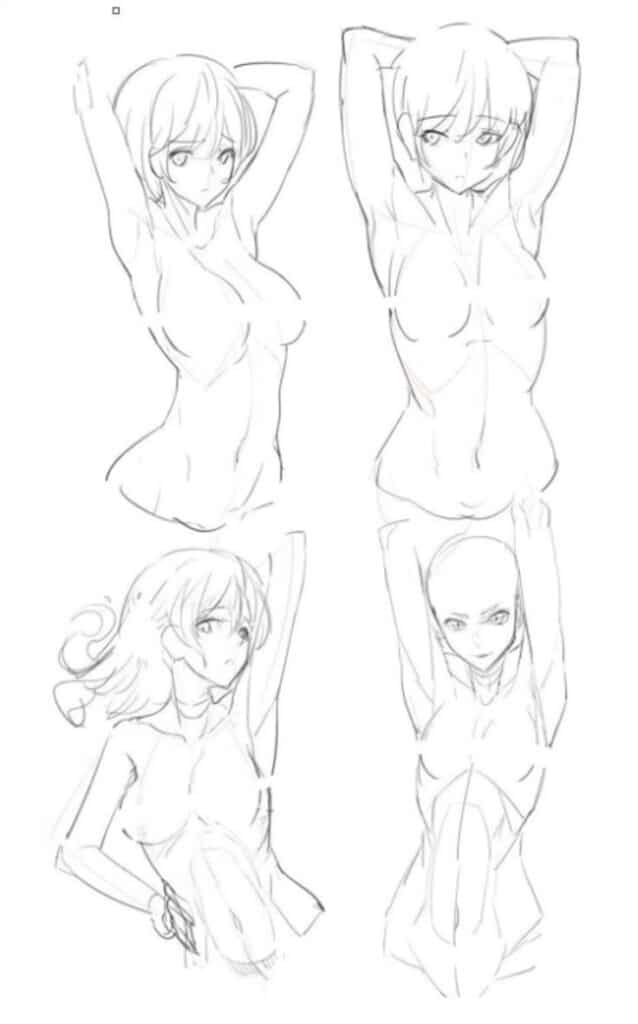
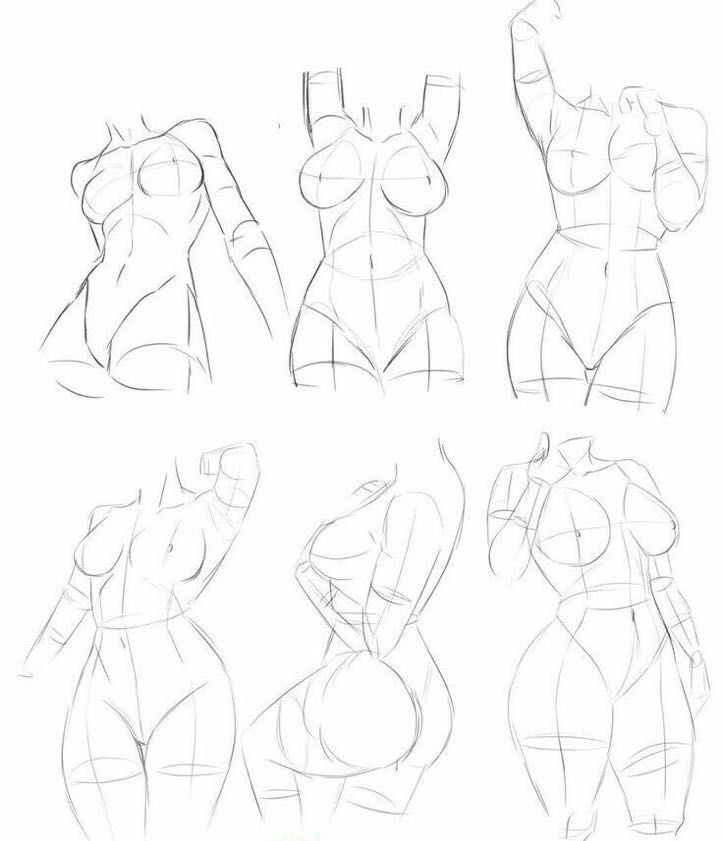
Arms should be slim but not too thin. Start by sketching smooth, slightly curved lines from the shoulder to the wrist. Elbows should bend naturally, about halfway down the arm. The forearm is usually a bit thinner than the upper arm.
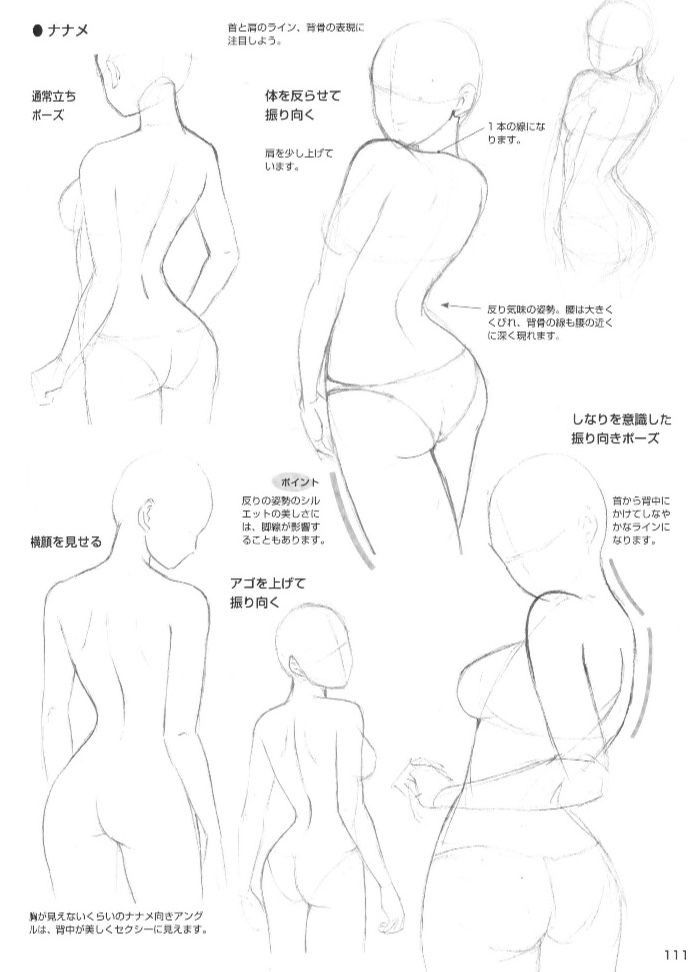
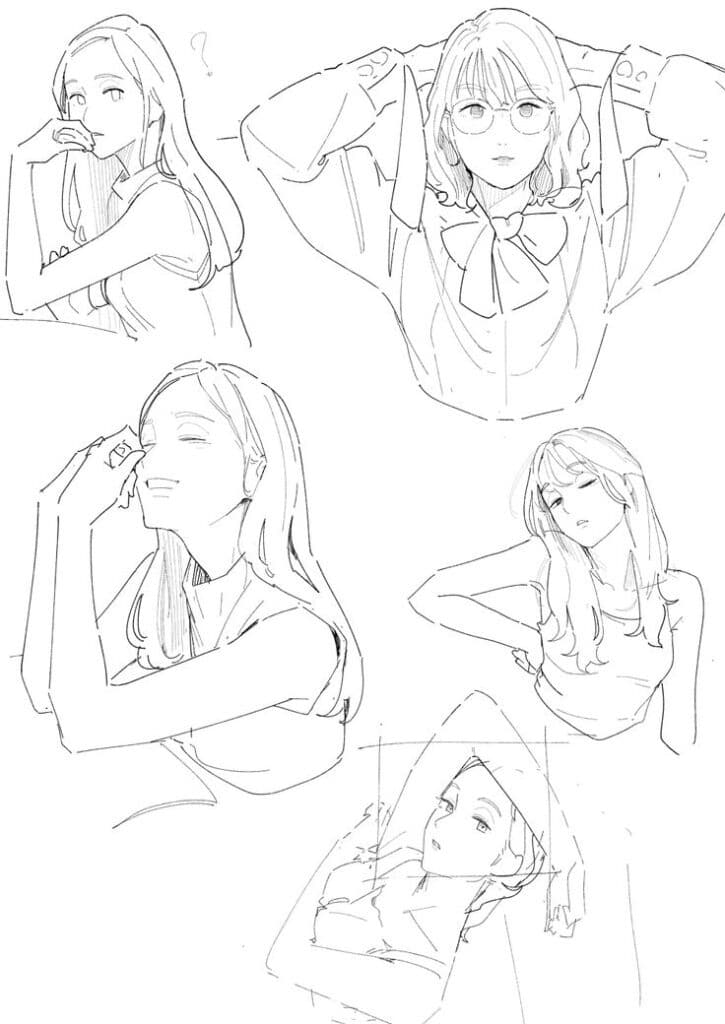
Hands are tricky but essential. Keep fingers slender and simplified, avoiding too many details at first. Fingers should taper gently, with the thumb positioned opposite to the fingers. Use simple shapes like ovals or rectangles to block out the palm and fingers before adding curves.
Remember that hands express mood, so a relaxed pose works best for beginners.
Drawing Legs and Feet
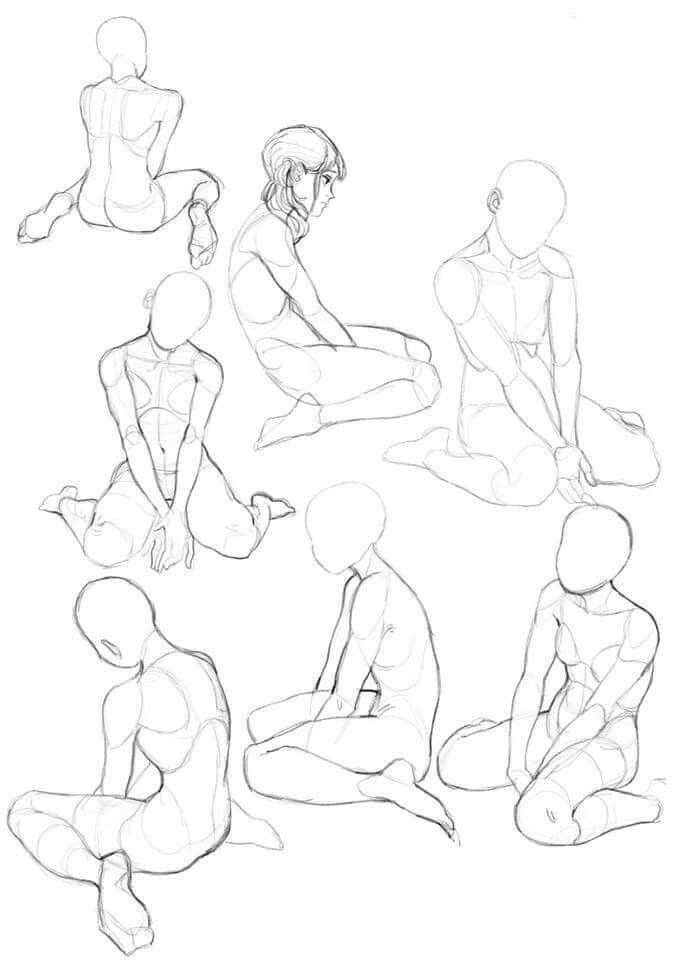
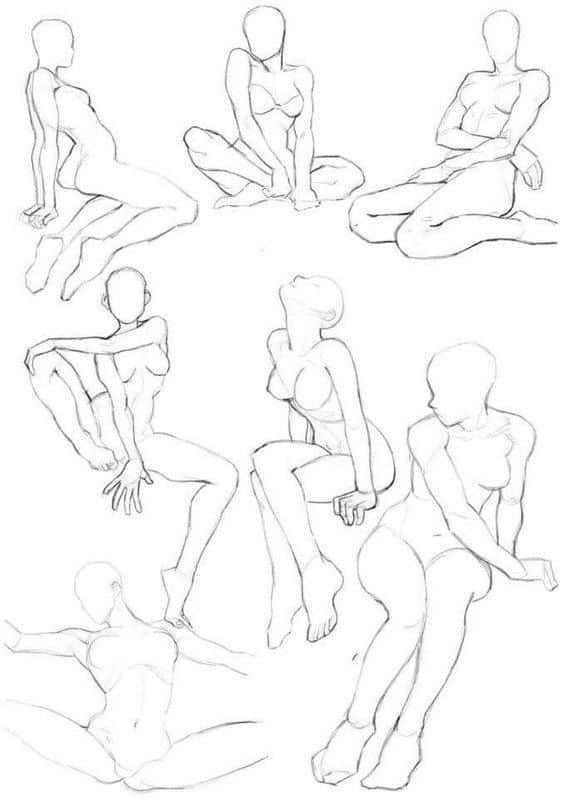
Anime legs are often longer and slimmer than realistic proportions. Start with basic shapes: long cylinders for thighs and calves that taper toward the ankles. Knees act like joints, so mark them clearly but keep them subtle.
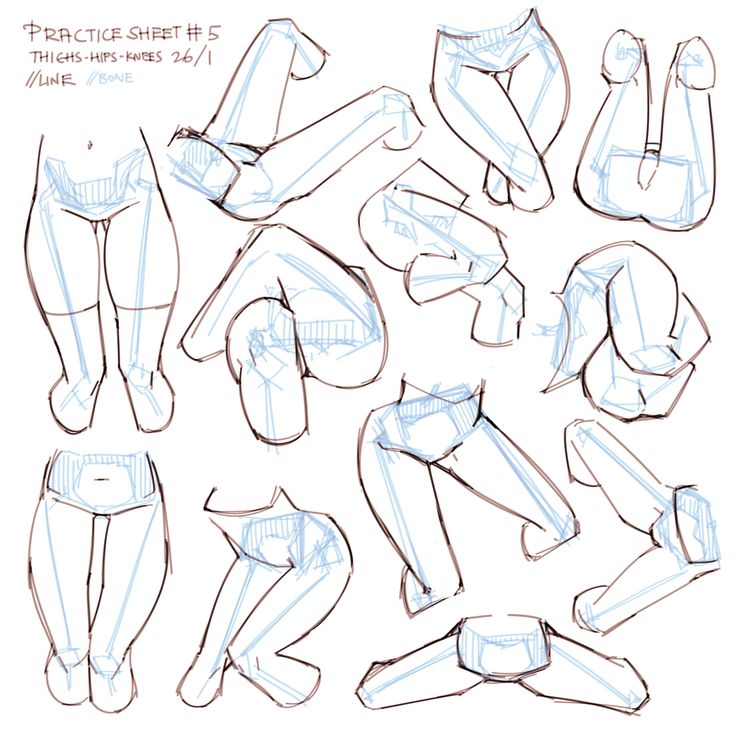
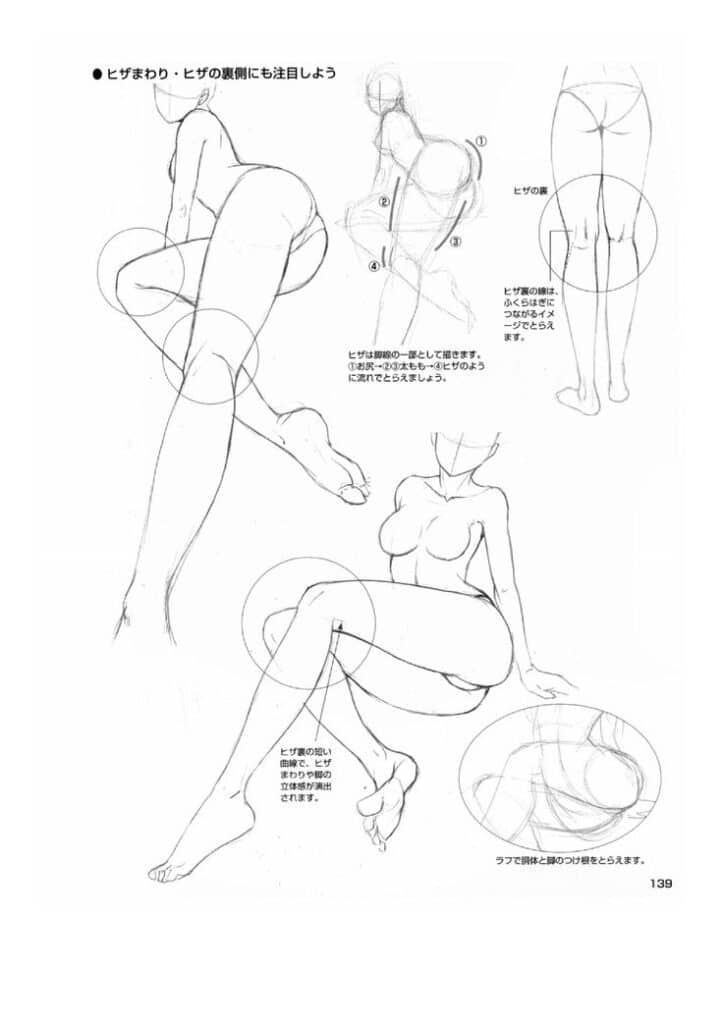
Feet are often drawn small and simple. Use an oval or triangle shape for the foot base, then add a slight heel. Toes can be indicated by small curves or left out entirely in simpler styles.
Balance is important: legs should support the body’s weight naturally, with the feet placed slightly apart for stability.
Defining the Neck and Shoulders
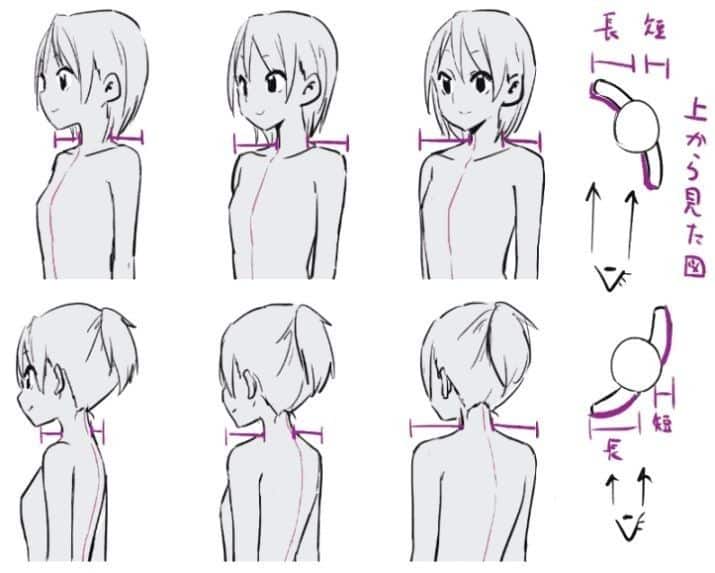
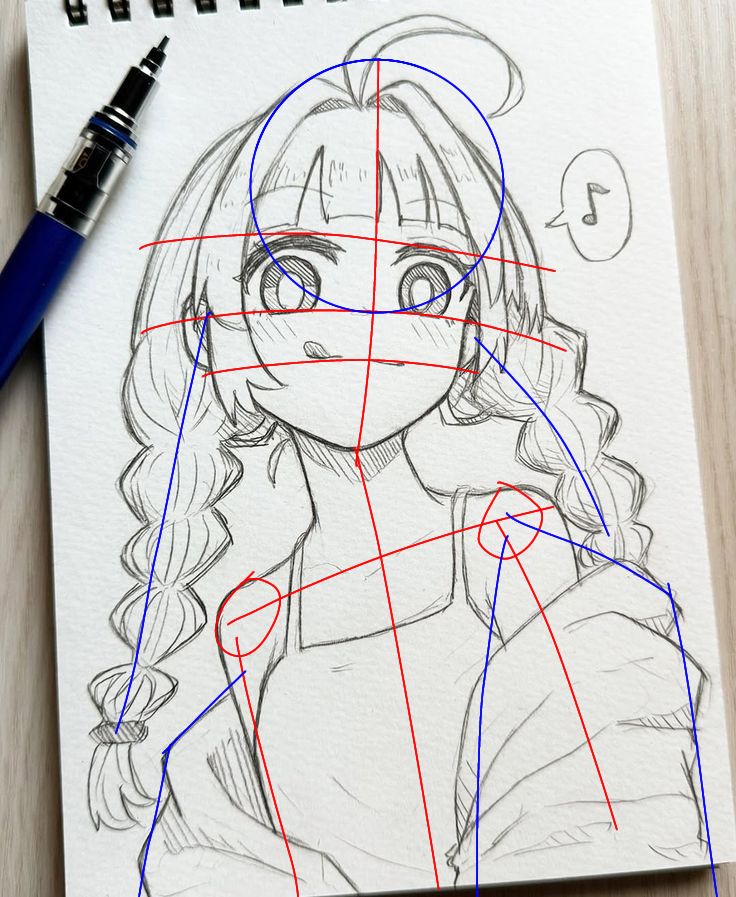
The neck is narrow and gently curved, connecting the head to the body. It usually tapers slightly as it meets the collarbone. Avoid making the neck too thick, or the figure will look unnatural.
Shoulders should be soft and rounded, not too broad for a female anime character. Use smooth lines that connect the neck to the arms, creating a natural slope. The collarbone can be lightly sketched as two small lines near the base of the neck, adding realism without over-detailing.
This subtle shaping helps the upper body blend smoothly into the head and arms.
Adding Feminine Details
Adding feminine details helps bring personality and realism to the anime female body. Focusing on the shapes, body proportions, and how clothes interact with the form enhances the character’s look.
Curves and Silhouette
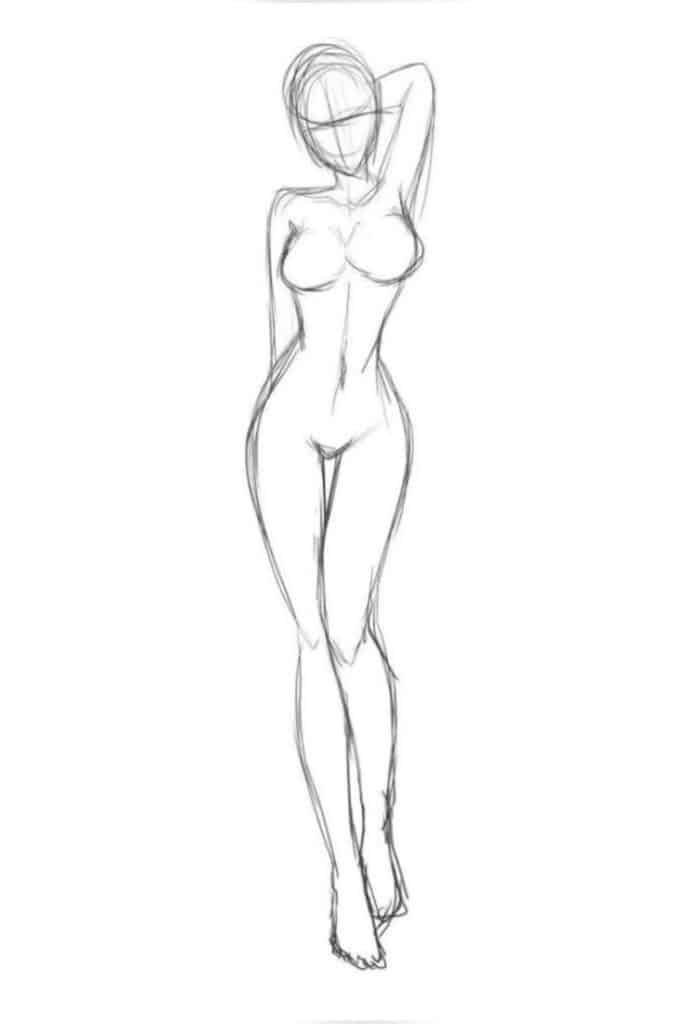
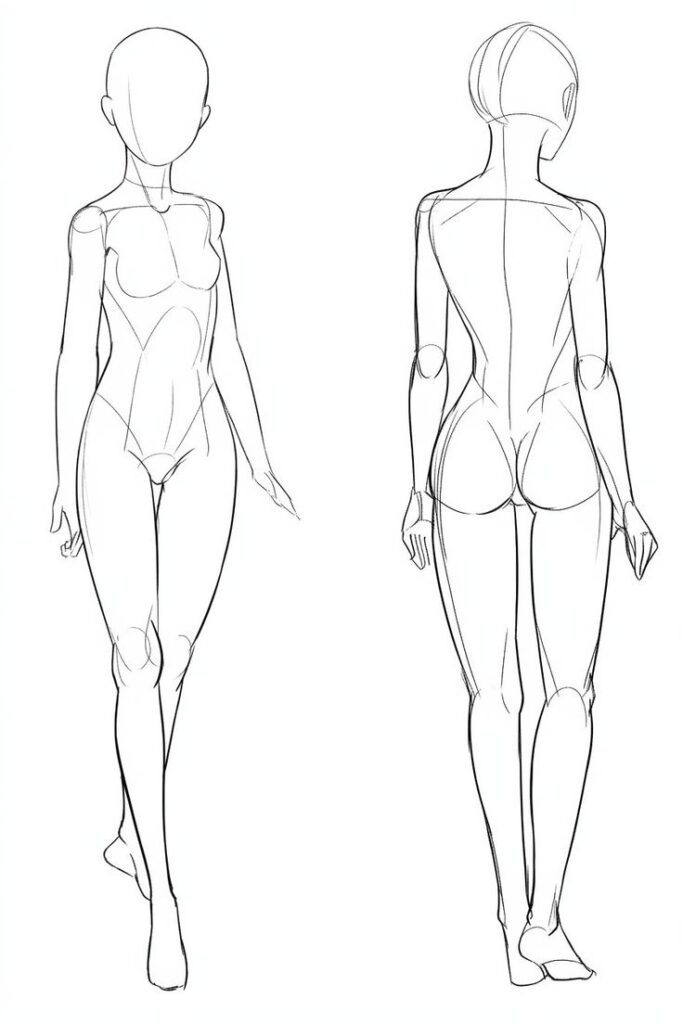
The silhouette is the first step to showing femininity. A smooth, flowing outline with gentle curves is key. The shoulders should be narrower than the hips to create a natural hourglass effect.
Soft, rounded lines work best for the arms and legs. Avoid sharp angles or blocky shapes since they look less feminine. The hips often flare out slightly to balance the slim waist.
Tips:
- Use light, quick strokes when sketching the outline.
- Keep the flow continuous and avoid abrupt changes in direction.
- Practice drawing from different angles to understand the curve changes.
Bust and Waist Definition
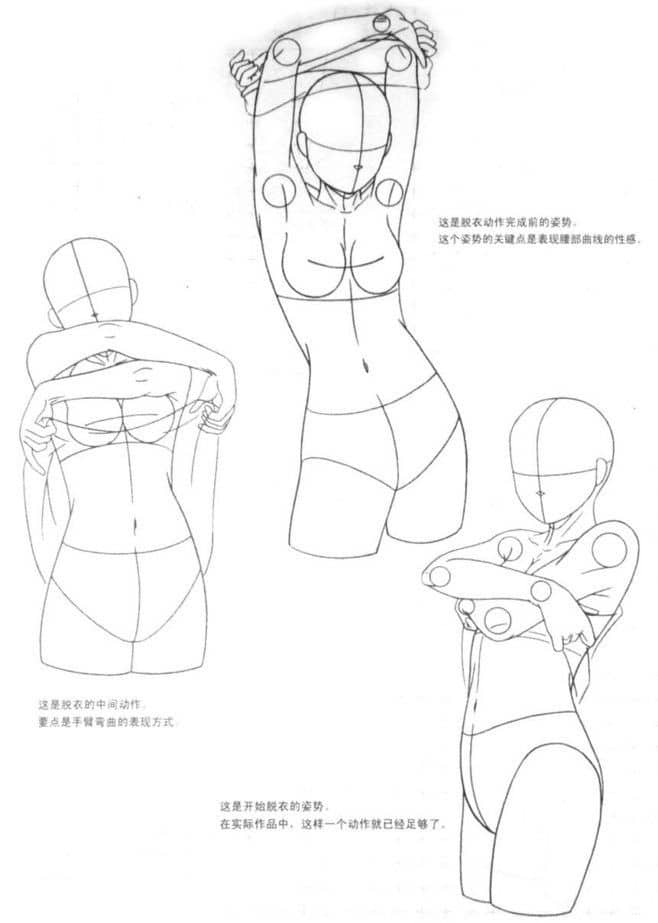
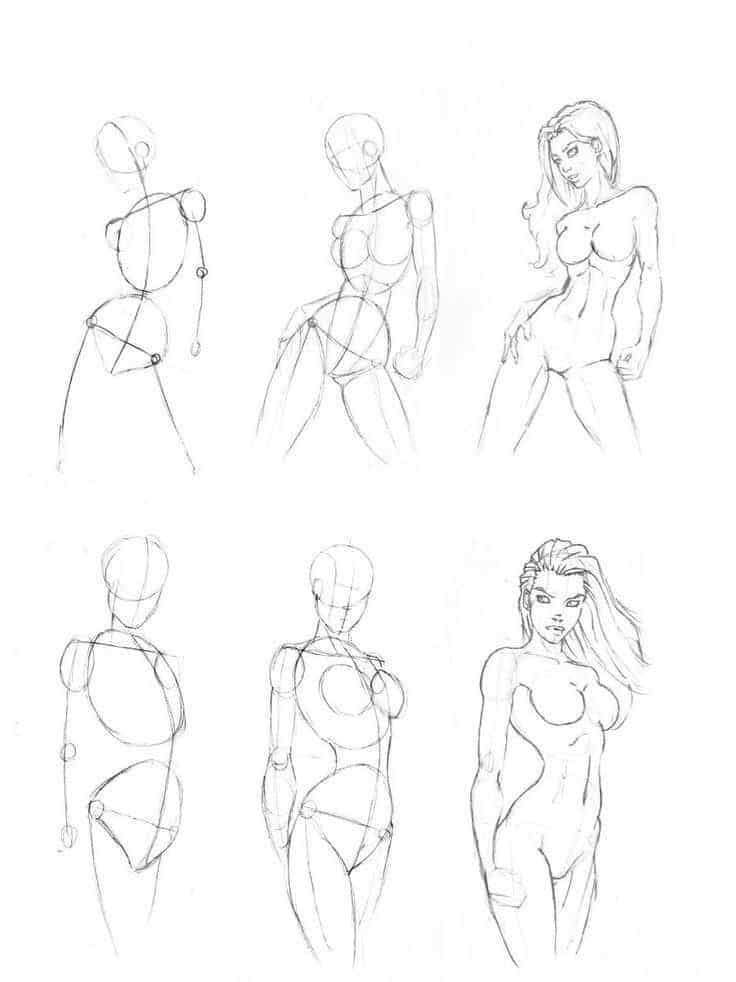
The bust and waist help define the character’s shape clearly. The bust should be placed just below the shoulder line, not too big or exaggerated unless the style calls for it. Make it look natural by using soft shading or curved lines.
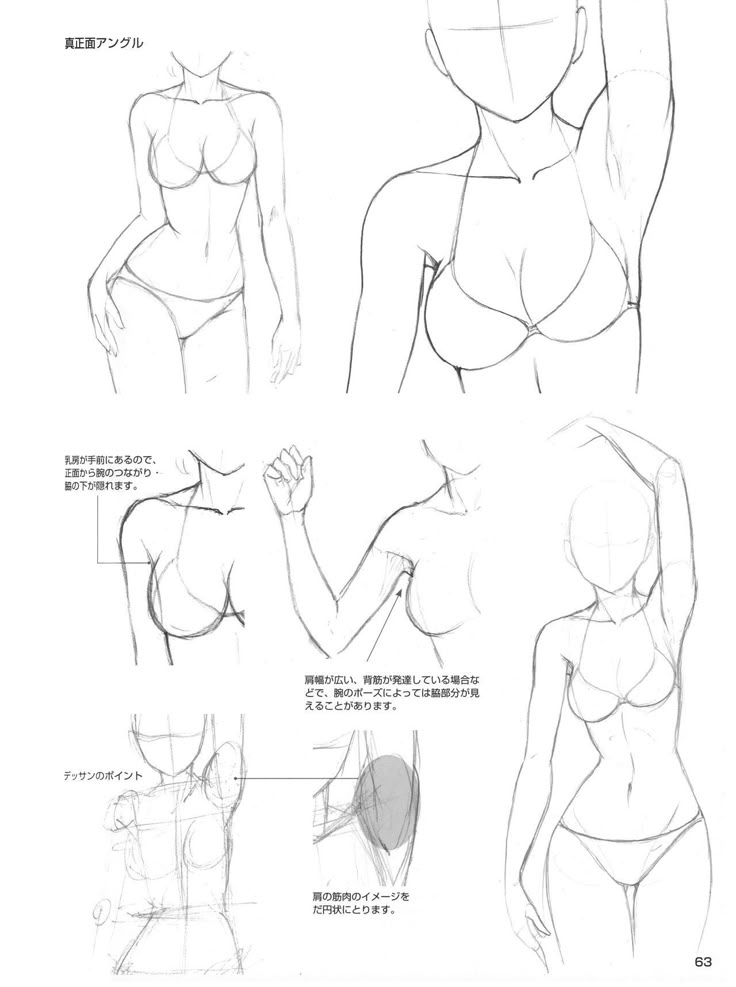
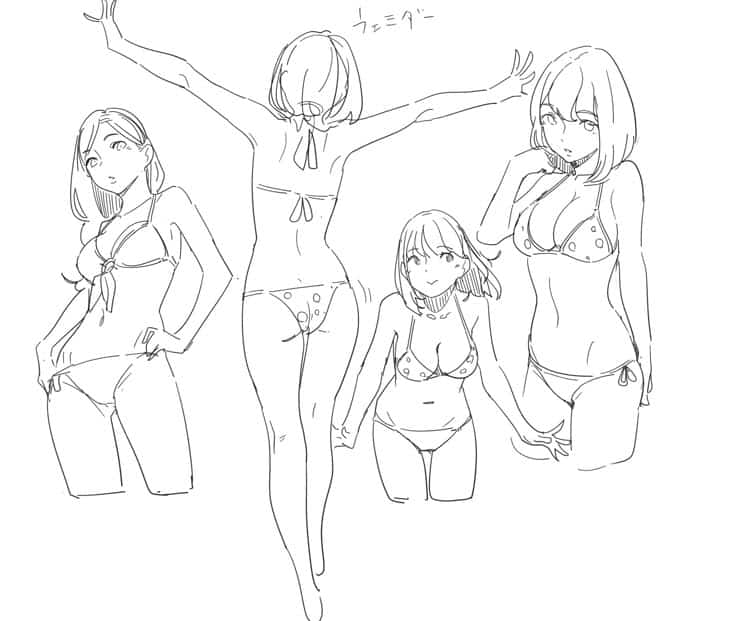
The waistline needs to be narrower than both the bust and hips for a feminine look. Drawing a slight inward curve at the waist helps with this. The stomach area should stay smooth without too many harsh lines.
Key points to remember:
- The bust height usually lines up with the upper torso.
- Waist curves should be subtle but noticeable.
- Avoid making the waist too thin, as it can look unnatural in anime style.
Working with Clothing Lines
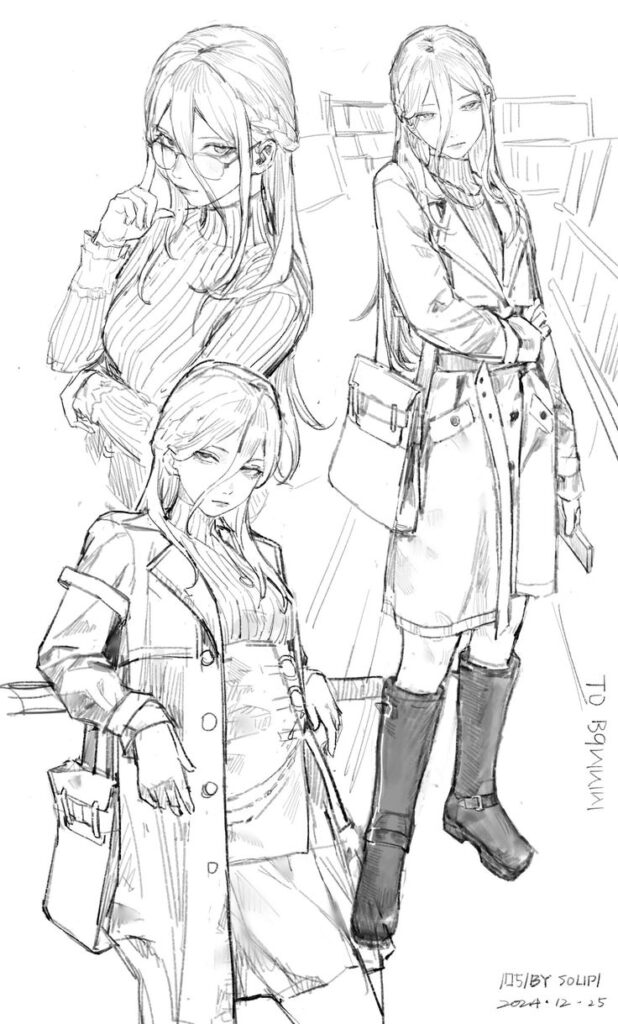
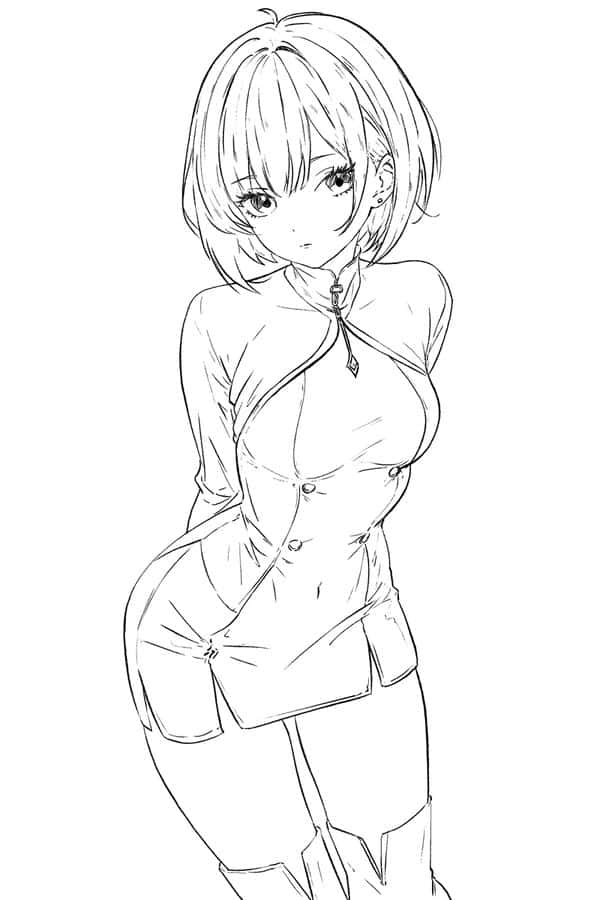
Clothing should follow the body’s curves to feel real. Pay special attention to how fabric folds near joints like the waist, hips, and underarms. Adding wrinkles and creases helps show movement and form.
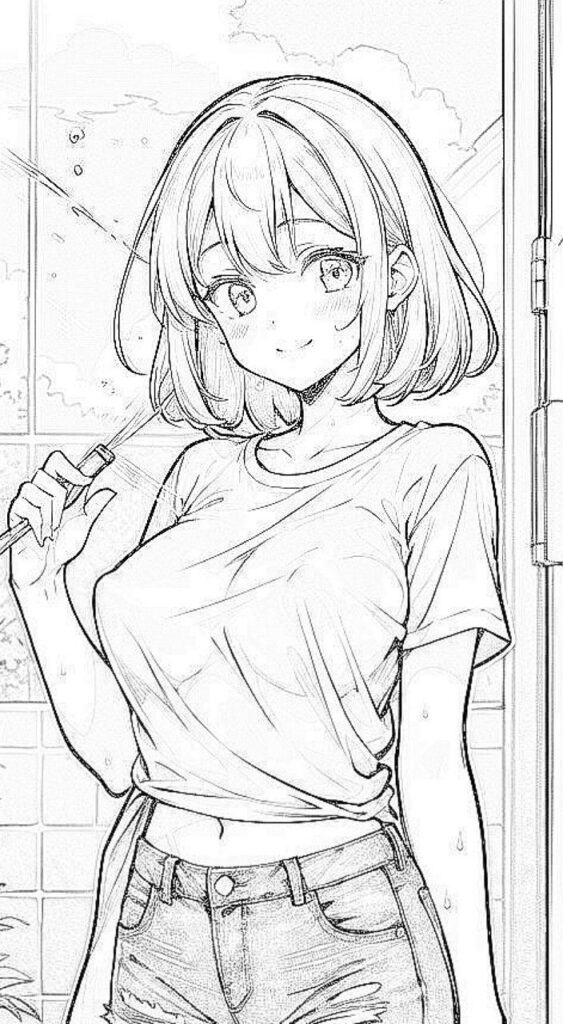
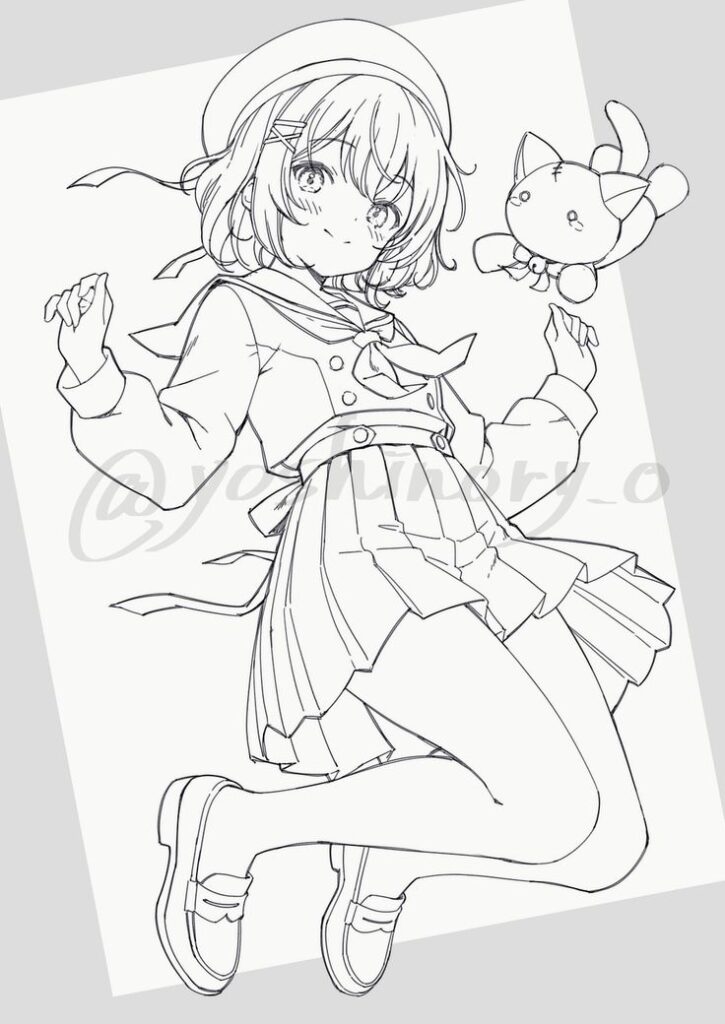
Loose clothing will drape softly over the curves, while tight clothes cling to the body and highlight the shape. Drawing seams and edges carefully can add a polished look.
Clothing tips:
- Use short, curved lines for wrinkles around bending joints.
- For tight clothes, add shadows near curves to show tension.
- Remember, clothes should never look stiff or straight on a curved body.
Bringing It All Together
This part focuses on refining the anime female body drawing by sharpening the lines and then adding details that bring depth and life to the character. It guides artists through making their sketches clean and their final work visually appealing.
Outlining and Cleaning Up
After finishing the rough sketch, the artist should start by choosing the strongest lines to keep. They can use a darker pencil or a fine tip pen. This step removes unnecessary or extra sketch lines that clutter the drawing.
It helps to work slowly and carefully, drawing smooth, confident strokes. If the lines are shaky or uneven, the drawing might look messy or less polished.
Using an eraser gently clears out the light sketch marks. They should avoid erasing too hard because it can damage the paper.
The goal is to have a clear, clean outline that shows the character’s form and key details. This makes the next steps easier and improves the overall look.
Adding Final Touches and Highlights
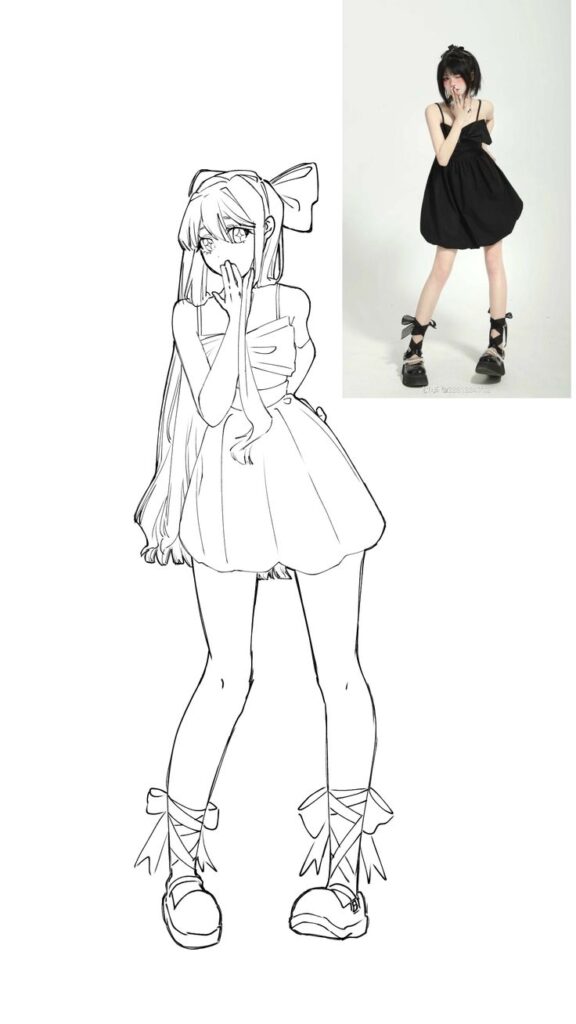
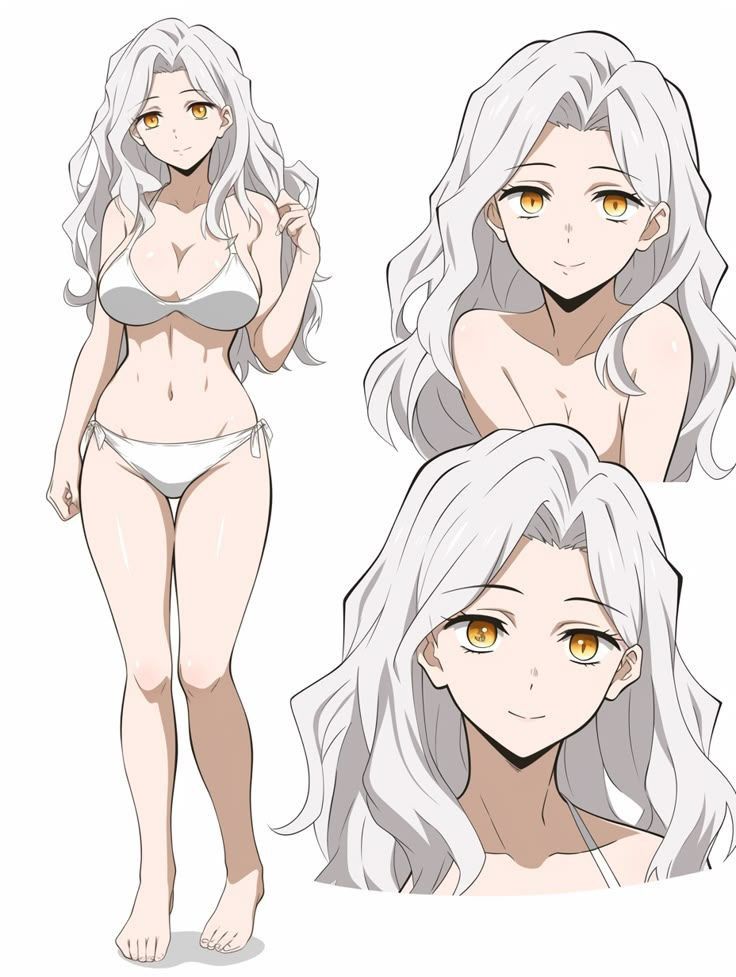
Once the outline is clean, adding shading and highlights makes the drawing appear more three-dimensional.
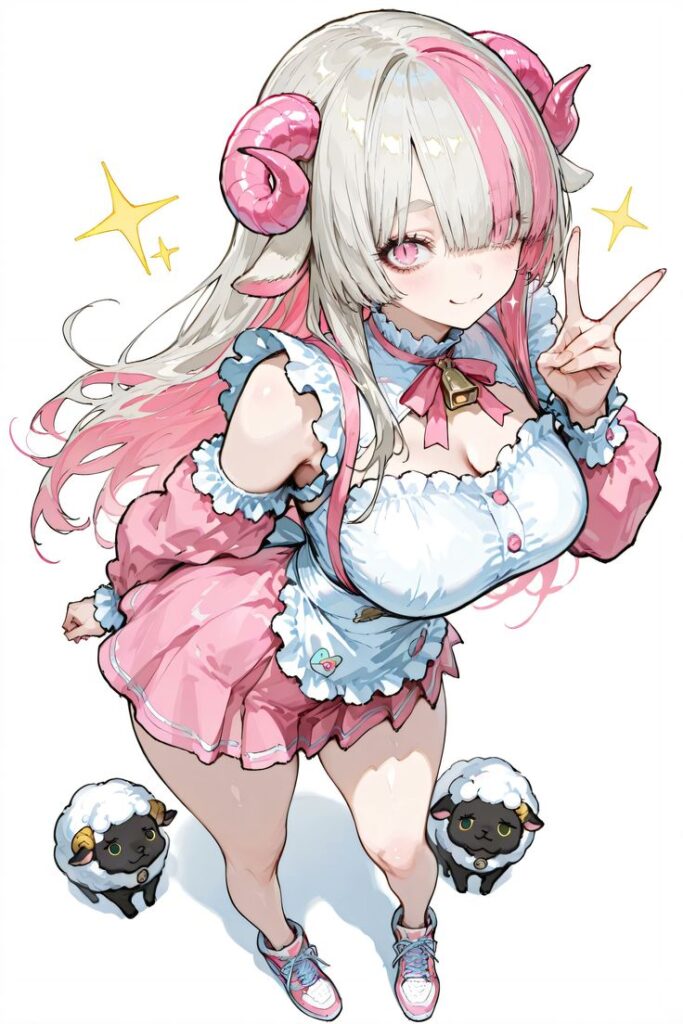
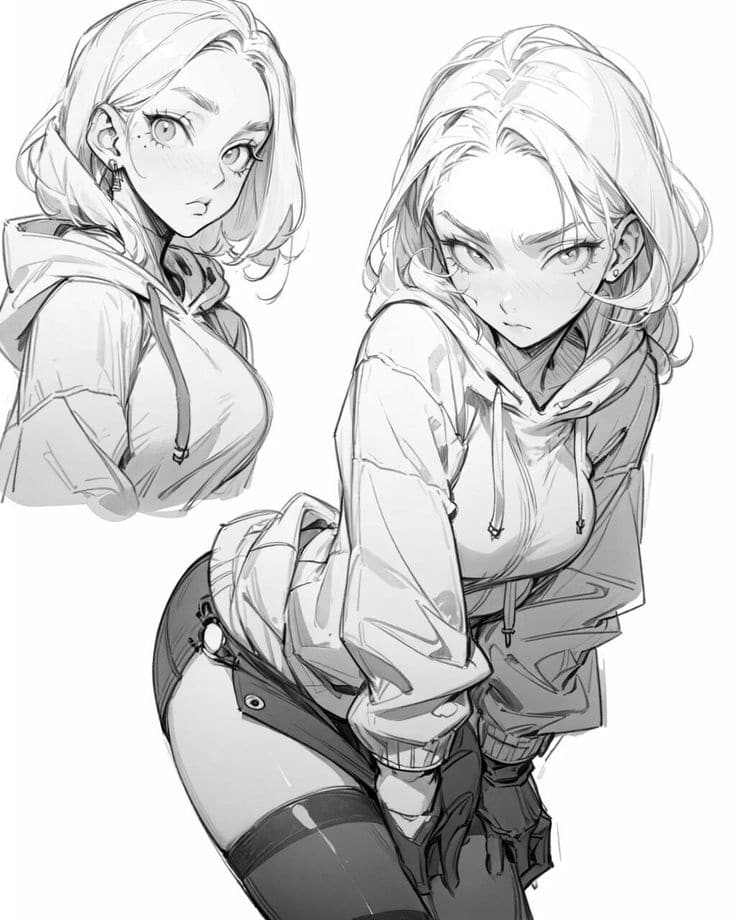
Shading can be done by deciding where the light source comes from. Darker shadows go on the parts away from the light, like under the chin, around the waist, or beneath folds in clothing.
Highlights are placed on areas hit directly by light, like the top of the head, shoulders, or the curves of the arms and legs.
Using soft pencils, colored pencils, or digital tools, the artist can blend shadows and highlights smoothly.
Adding small details like hair strands, folds in fabric, or subtle muscle lines also helps the drawing feel complete and realistic.
- 12.9Kshares
- Facebook0
- Pinterest12.9K
- Twitter0
